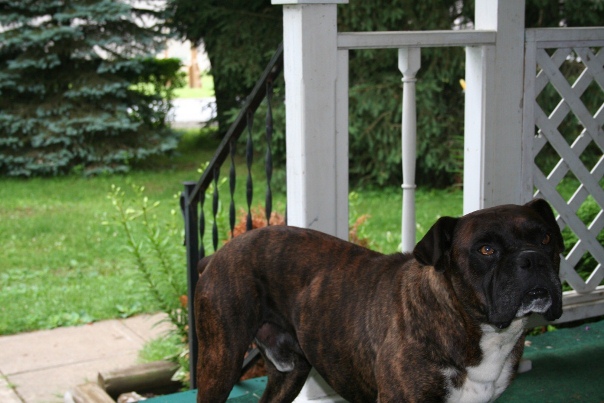

Rather, Boxers continually shed in small quantities. This is great in terms of shedding, because they don’t moult in huge drifts with the changing seasons. Boxer Coatīoxers have a short, smooth, single coat. This doesn’t mean white Boxers can’t make great family pets with the right care (and SPF!), but breeders will usually require them to be neutered so that the extreme white spotting gene isn’t passed on any further.
#Pit boxer mix brindle puppy skin
These Boxers produce so little pigment they end up at risk of sunburn, skin cancer and blindness caused by UV damage.Īnd because the same pigment also plays a vital role in the development of delicate hair cells in their ears, white Boxer dogs are more likely to be deaf. Which doesn’t sound like a large proportion, but for a Boxer to have that much white in their coat, they must have inherited two copies of the “extreme white spotting” gene. But, some Boxer dogs carry “white spotting” genes, which lay white patches on top of the fawn.Īnd for breeders, “white Boxer” has a very specific definition: a Boxer dog with white markings covering more than 30% of its body. Genetically, all Boxers’ base color is fawn. We’ll come back to these in a minute.Īnd finally, some Boxers have a black mask over their eyes and muzzle. In some places, the fawn might also be broken up by white patches. Sometimes the brindling is so dense it gives the impression of being a solid black coat, but it is always brindling. The fawn can also be overlaid by black stripes known as brindling. But like saying a human has brown hair, fawn can cover any shade from dark blonde to deepest mahogany, via a spectrum of tans and reddish browns. You can take a look at more Boxer fun facts here! Boxer appearanceīoxer dogs come in a pleasingly simple choice of colors.īoxers’ main color is fawn.
#Pit boxer mix brindle puppy full
There are a lot of rival theoriesĬelebrity Boxer owners include model Gisele, actor Jessica Biel and the dog whisperer himself Cesar Millan!īoxers can take up to three years to reach their full grown size, almost a year longer on average than other breeds. Nobody really knows why Boxer dogs are called Boxer dogs.


The Boxer was one of the earliest dog breeds to be recognized by the American Kennel Club – the first breed standard was registered in 1904. Once the Boxer dog breed was established, people discovered they weren’t just good at hunting, but also made vigilant guard dogs and intelligent military dogs too.īoxers got their big break as companion pets at the end of WW2, when soldiers returning from Germany took them home as family pets. The aim was to consolidate all the traits they admired in those breeds, and fix them in one, definitive dog. To cut a long story short, the Boxer dog was derived from several popular hunting breeds of the time. It’s rather complex, and they admit you deserve an award if you can follow it! The foundation of the breed was meticulously documented at the time, and the American Boxer Club tells the story on their website. The Boxer dog traces its roots to Munich, Germany in the 19th century.



 0 kommentar(er)
0 kommentar(er)
